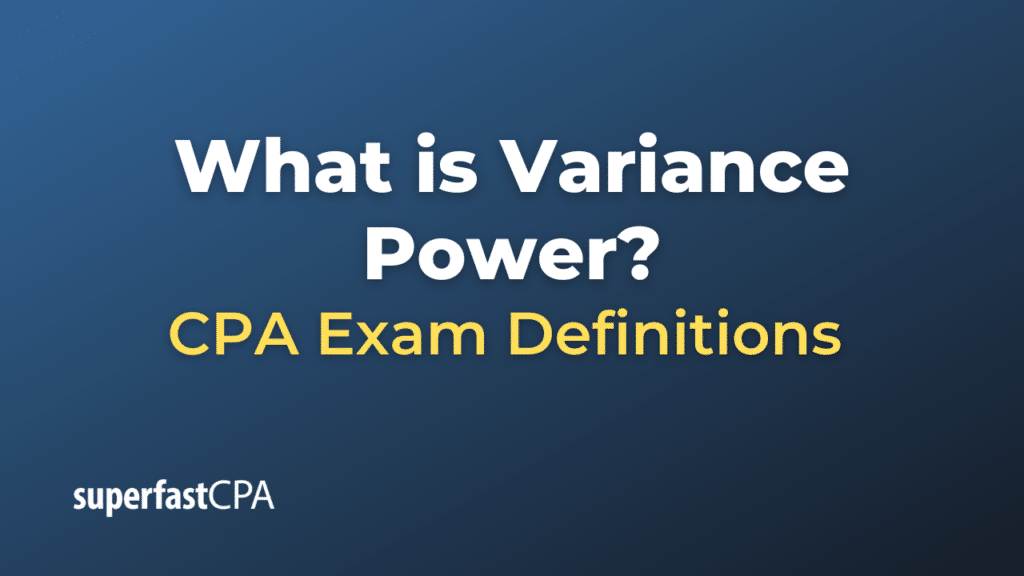Variance Power
The term “variance power” is not a standard term in statistics or finance, but “power” and “variance” are both important concepts in statistics, often discussed in the context of hypothesis testing.
- Power: In hypothesis testing, the power of a test refers to the probability that the test will correctly reject a false null hypothesis (i.e., it will detect an effect when there is one). Power is usually denoted by 1−β1−β, where ββ is the probability of Type II error (failing to reject a false null hypothesis).
- Variance: As previously discussed, variance is a measure of the dispersion of a set of data points around their mean. In hypothesis testing, the variance of sample data can affect the power of the test. Higher variance usually means lower power, assuming the sample size remains the same.
How Variance Affects Power:
When conducting a hypothesis test, the power of the test can be influenced by the variance in the following ways:
- Larger variance, Lower Power: A larger sample variance generally reduces the power of a statistical test to detect a difference from the null hypothesis. This is because larger variance increases the standard error, making it more difficult to detect a statistically significant difference.
- Smaller Variance, Higher Power : Conversely, a smaller variance (with a fixed sample size) usually increases the test’s power because it reduces the standard error, making it easier to reject the null hypothesis if it is false.
- Increasing Sample Size: One way to offset the effect of high variance on the power of a test is by increasing the sample size.
Example of Variance Power
Let’s walk through a hypothetical example to illustrate how variance can affect the power of a statistical test. We’ll compare two different weight-loss programs to see which one is more effective in helping people lose weight.
Hypothetical Scenario
You’re a researcher conducting an experiment on the effectiveness of two weight-loss programs: Program A and Program B.
- Program A: Participants lost an average of 8 pounds over 6 weeks.
- Program B: Participants lost an average of 10 pounds over 6 weeks.
Data
Let’s say you have 30 participants for each program.
- Program A: Average weight loss = 8 pounds, Variance = 4
- Program B: Average weight loss = 10 pounds, Variance = 1
Objective
You want to determine if Program B is significantly more effective than Program A at helping people lose weight.
Hypothesis
- Null Hypothesis (H0H0): There is no significant difference in the weight loss between Program A and Program B.
- Alternative Hypothesis (HaHa): Program B is significantly more effective than Program A at causing weight loss.
Variance and Power
The larger variance in Program A (variance = 4) suggests that the weight loss outcomes are more spread out. This larger variance would generally make it harder to reject the null hypothesis, reducing the test’s power.
On the other hand, the smaller variance in Program B (variance = 1) indicates that the weight loss outcomes are closely packed around the mean. This smaller variance would generally increase the power of the test to detect a significant difference.
Results
You conduct the statistical test (e.g., independent t-test), and you find that the test is significant, indicating that Program B is more effective than Program A in terms of weight loss.
Conclusions
In this example:
- The smaller variance in Program B’s weight loss outcomes increased the test’s power, making it easier to detect the program’s effectiveness.
- The larger variance in Program A’s outcomes reduced the test’s power but was offset by Program B’s smaller variance and more considerable weight loss.
Remember, this is a simplified example designed for illustrative purposes. In a real-world scenario, you would also consider other factors like sample size, confidence level, and possible confounding variables when interpreting the results.













